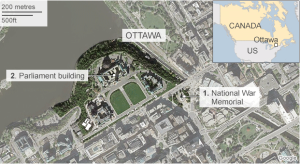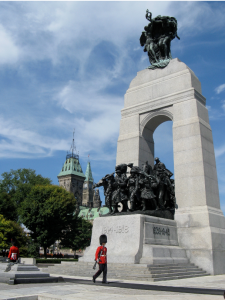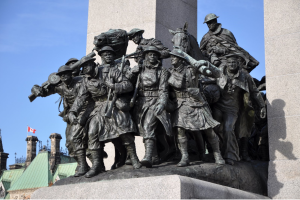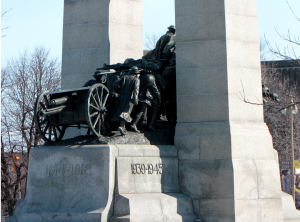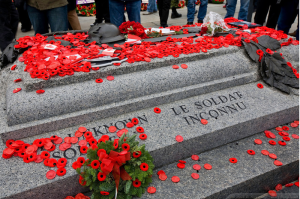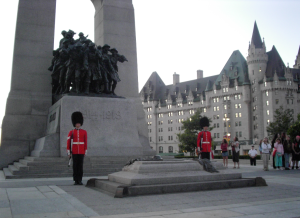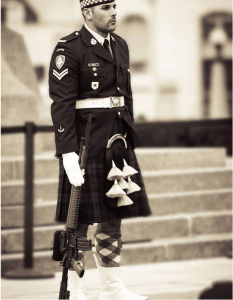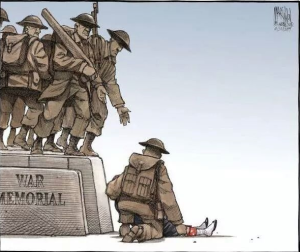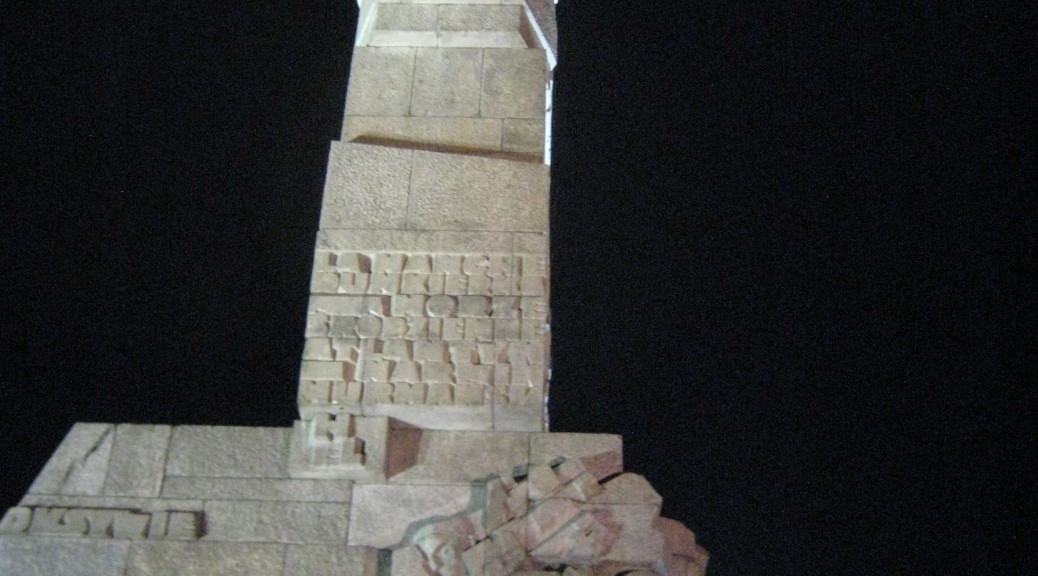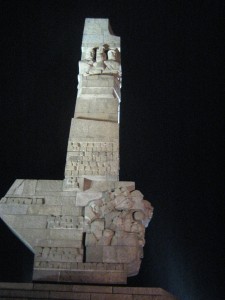Many years ago we took a family vacation to Maui. While there, one of the fun things to do is to drive along the beautiful coastline to Hana. There are innumerable places to stop to view the scenery which is nothing short of spectacular.
If you venture past the town of Hana about 8 miles, you will come to mile marker #41. Look carefully for a nearly hidden left turn which will take you into the Palapala Hoomau Church. Its easy to miss so keep a close watch. There, buried in a small graveyard beside the church, lies Charles Lindbergh, arguably America’s most famous aviator.
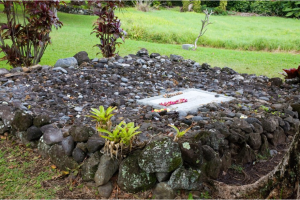
Lindbergh’s Grave near Hana
It seems such an odd place for Lindbergh to be buried. Why isn’t he buried, for example, in St. Louis, where he found financial backing for his famous “Spirit of St. Louis”? Or in San Diego where Ryan Airlines designed and constructed the plane and where the airport is named Lindbergh Field?
The story of Lindbergh’s life from being hailed as one of the greatest aviators on earth to a small churchyard cemetery in Hawaii is interesting.
Most people are aware that Lindbergh was the first person to make a solo flight across the Atlantic in 1927 in a plane he called “The Spirit of St. Louis”. He became a household name at that time and was one of the most famous people on the planet. A few years later, sadly his son was kidnapped from the family home in 1932 and subsequently murdered. At the time, as a media circus swarmed around him, the crime became known as “The Crime of the Century”.
To escape the public spotlight, Lindbergh moved the family to Europe where he began to cross paths with the rising tide of Nazism in Germany.
In 1936 the US Army asked Lindbergh to assess the quality and characteristics of the German Air Force. The Nazis were only too happy to provide him with a tour by the end of which Lindbergh would become friendly with Hermann Goring. His glowing and exaggerated report to the US Army told of a German air force that was so vastly superior to those of the Soviet Union, France and England that Germany could destroy those countries at will. The Nazis had wanted to convey this message of strength to America and Lindbergh, who along the way had become a fellow Nazi traveller, was only too happy to oblige.
On the same trip Lindbergh attended the Opening Ceremonies of the 1936 Olympic Games and sat in a special spectator’s box with Goring and his wife.
Lindbergh returned to America in 1937 and began to involve himself in politics. As the war drew nearer, he became a proponent of keeping America out of what many felt at the time was “just another European war”. Prior to America’s entry into WW2 in December of 1941, America was deeply divided about getting involved. President Roosevelt and those that wanted to intervene on behalf of those fighting Nazism were in a minority.
To understand exactly how divided America was, we should look back to 1933, when Hitler first came to power. Americans were initially indifferent to Hitler. The depression dominated the headlines and Americans weren’t interested in Europe’s problems while there were so many at home. It was only after kristallnacht, in November 1938 that public opinion began to turn against the Nazis. As Americans watched the Anschluss with Austria and then watched the German occupation of Czechoslovakia, the general feeling in the US was that Europe was going to embark on a very long and costly war. They thought back to the history of WW1 and foresaw a similar outcome. They foresaw casualties on an even larger scale but they thought eventually Germany would be brought to heel. Just after the start of WW2, in October of 1939, polls in the US indicated that 85% of Americans hoped Britain and France would win but also indicated that a majority still wanted to stay out of the fight.
But the spring of 1940 would bring about a German Blitzkreig that knocked France out of the war in just 4 weeks. This sudden collapse of France left England on its own. Most Americans began to believe that Hitler would eventually attack the US and thus became far more interested in helping England win. Public opinion quickly moved to support providing munitions to England, first in the form of “Cash and Carry” where England could buy what she needed with cash and then “Lend-Lease where America would “lend” munitions to England in exchange for leases on bases in the Caribbean and Newfoundland. Roosevelt would famously describe “Lend-Lease” by suggesting to the American public that lending ships and planes and munitions to England was no different than lending your garden hose to a neighbor whose house had caught fire.
The America First Committee, created in September 1940, was not only against entry into the war but also opposed aid. Initially their simple message was that a properly armed America, protected by the vast Atlantic Ocean, was impregnable. If Germany could not attack America, then what was the purpose of aiding England? In fact, they felt, aiding England would only weaken America and potentially draw the US into the conflict. The America First Committee expressed the concern that it was already bad enough that their northern neighbor, Canada, was already committed to the defense of England and this too could bring the Nazi menace to America’s doorstep.
The AFC argued that they were simply motivated by a desire to save American lives. For some members, this was likely true. But for many others, this argument was a cover for something more sinister. Many joined the AFC as a way to express their hatred for Roosevelt and the New Deal. As 1940 turned into 1941, many AFC members began to also express xenophobic and anti-Semitic sentiments.
When Hitler overran Poland, his speeches became filled with bile aimed at both Slavs and Jews. Hitler began to systematically murder the Polish educated classes while at the same time stripping Jews of their property and forcing them into ghettos created in all the larger cities and towns. The AFC just ignored these actions. When Hitler overran six more democracies in the spring of 1940, Roosevelt pointed out that Hitler was out to end democracy in Europe. His victory, Roosevelt warned, “would send Europe back into the dark ages with no democracy and no human decency”. The AFC ignored these inconvenient truths as well. But the American public was coming around to Roosevelt’s position as time passed and as the war news continued to worsen.
When Germany invaded the Soviet Union in June of 1941, the AFC was invigorated and loudly proclaimed that it was in America’s complete interest to let Hitler and Stalin slaughter each other’s people. The AFC argued that, “this was now not a war to preserve democracy, it was a war between two equally awful dictatorships. America should stay out of it”.
Enter Charles Lindbergh. He was among the most extreme and popular AFC spokesmen. And he had a new theme for everyone to consider. His idea was that America should support Germany. To this point, the typical AFC speaker was content to oppose war and to criticize British imperialism on a equal footing with their dislike of the Nazis. Lindbergh’s full throated support for throwing in with Germany was a new dynamic as most Americans were still rooting for England, they just didn’t want get involved. He was, however, very popular with large groups with in the AFC and demand for him as a speaker at AFC events was higher than ever.
Lindbergh spoke about how much there was to admire in Hitler’s Germany. He spoke about how he built the Autobahn and provided jobs to all who needed one. He wrote about how Germans were harnessing science to create new inventions. He said that he was not against the idea of war, just against the idea of war with Germany. Lindbergh became the AFC’s most popular speaker. Tens of thousands attended his rallies and hundreds of thousands listened to him on the radio.
And thus began the undoing of the AFC. Lindbergh gave a voice to his Nazi fellow travelers whose anti-Semitic beliefs reinforced the most extreme elements of the organization. Eventually some of the leadership of the AFC would try to repudiate Lindbergh but it was too little and too late. The organization would be destroyed by Lindbergh.
In the beginning, Lindbergh was driven by his hatred of Communism. While other members of AFC were worried about the survival of American democracy, Lindbergh began to speak about the survival of the white race which he couched in terms of “western civilizations”. He famously once said, ” Our bond with Europe is a bond of race, not of political ideology”. Suddenly it seemed the AFC was saying that America should not care about the demise of all the European democracies. Instead America should just support victory for the white race against the Slavs (Russians).
During the summer of 1941, the AFC was no longer content to hammer away at Roosevelt and at British Imperialism. Adding to this list, they decided to attack Jews.
The essential slur was that of disloyalty. They said that Jews had good reason to hate Hitler for his anti-Semitic actions. But despite these good reasons, they argued, if the Jews forced America into the war to save Europe’s Jews, it would be the fault of the American Jews when American boys were killed in the fight.
Overt anti-Semites began joining the AFC in large numbers while more and more newspaper editorials began speaking out against this racial slur which was now beginning to pit one group of Americans against another.
In August of 1941, Burton Wheeler who chaired the Senate Interstate Commerce Commission publicly stated that it was time to investigate “interventionists” in the motion picture industry. To his “surprise”, he soon afterwards said he was surprised to learn that most of the studio heads in the movie business were Jews. Lindbergh and other AFC leaders quickly jumped into the fray demanding to know why Hollywood was attempting to “rouse war fever” and why America was allowing so many “foreign born” immigrants to shape American opinion. Hollywood struck back when Wendell Willkie, the Republican party’s 1940 Presidential candidate publicly ridiculed the AFC’s position. A senior partner at J.P.Morgan, Thomas Lamont, demanded that Lindbergh back up his accusations by naming specific people who he claimed were “working for war”.
Then, on September 11, 1941, following a German U-Boat attack on the US destroyer Greer, Roosevelt announced that all US Navy ships were free to open fire on any German vessel that was attacking a US flagged ship or convoy. On the same day, Harold Ickes, Roosevelt’s Secretary of the Interior goaded Lindbergh by publicly suggesting that Lindbergh was a Nazi sympathizer.
Lindbergh took the bait and in a speech in Des Moines, Iowa later that evening he would state:
“The three most important groups who have been pressing this country toward war are the British, the Jewish and the Roosevelt administration. Behind these groups, but of lesser importance, are a number of capitalists, Anglophiles, and intellectuals who believe that their future, and the future of mankind, depends upon the domination of the British Empire …These war agitators comprise only a small minority of our people; but they control a tremendous influence.”
Of the Jews he said “it is not difficult to understand why Jewish people desire the overthrow of Nazi Germany… But no person of honesty and vision can look on their pro-war policy here today without seeing the dangers involved in such a policy, both for us and for them. Instead of agitating for war, the Jewish groups in this country should be opposing it in every possible way, for they will be among the first to feel its consequences. Tolerance is a virtue that depends upon peace and strength. History shows that it cannot survive war and devastation… Their greatest danger to this country is in their large ownership and influence in our motion pictures, our press, our radio, and our government. “
Lindbergh had essentially paraphrased the exact warning that Hitler had delivered to the Reichstag in 1939 when he too warned that the Jews were leading Europe to war and that the Jews would suffer more than anyone else from the war that they themselves caused.
Hitler had said, “If international finance Jewry in and outside of Europe should succeed in thrusting the nations once again into a world war, the result will not be the Bolshevization of the earth and with it the victory of Jewry, but the destruction of the Jewish race in Europe.”
Lindbergh’s version was all too similar to Hitler’s version and the media reaction was immediate. Newspapers around the country declared him to be contemptible. The Republican national leadership also went after him. Wendell Willkie called his speech “the most un-American talk made in my time by any person of national reputation”. Thomas Dewey called it “an inexcusable abuse of the right of freedom of speech.”
Lindbergh’s speech severely damaged the AFC. The public turned against both him and the AFC. Other newspapers characterized the organization as being full of people that included, ” a liberal sprinkling of Nazis, Fascists, anti-Semites, and crackpots.” The organization would never command large audiences ever again and Lindbergh’s reputation would never recover.
A few short months later the Japanese attacked Pearl Harbor and Germany declared war on the United States and the AFC was out of business. Lindbergh tried to volunteer for service but Roosevelt saw to it that he would not be allowed to enlist. Instead, Lindbergh spent the war working for various aircraft companies helping them to fix production problems as they ramped up the war effort.
As a consultant to several aircraft manufacturers, he eventually made his way to the Pacific where his aviation expertise was put to use. He was able to figure out a way to get more power out of the engine on the Corsair when taking off so that Marine pilots could double their bomb load. He also was able to introduce improved techniques to pilots of the P-38 that allowed them to fly at altitude with far less fuel consumption. He even managed to fly some combat missions. But his role in helping America’s war effort would never come close its full potential.
With his reputation destroyed, Lindbergh would never command much of an audience ever again. After the war he served on a few government commissions and he developed an interest in conservation. Eventually he moved to Hawaii to avoid the spotlight where he would die at age 72.
